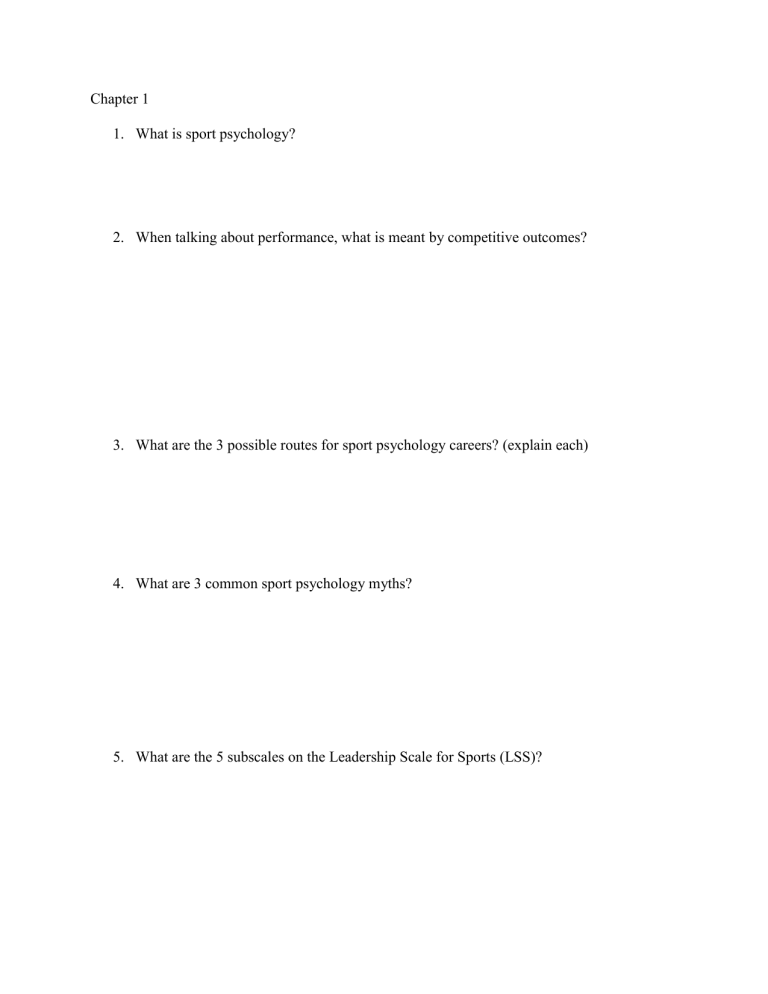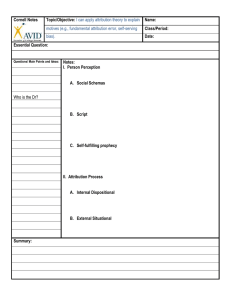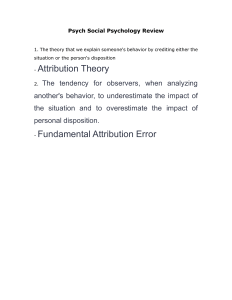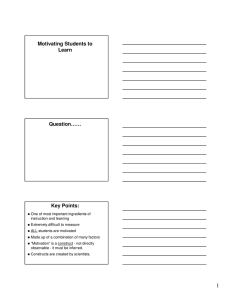
Chapter 1 1. What is sport psychology? 2. When talking about performance, what is meant by competitive outcomes? 3. What are the 3 possible routes for sport psychology careers? (explain each) 4. What are 3 common sport psychology myths? 5. What are the 5 subscales on the Leadership Scale for Sports (LSS)? Chapter 2 6. What is personality? 7. What are the 5 personality theories? 8. What is self-actualization? 9. What are the 3 aspects of SDT? 10. What does it mean to be high on conscientiousness? 11. What is functional perfectionism? 12. What is dysfunctional perfectionism? 13. What is PSP? 14. What is ECP? 15. What is mental toughness? 16. What are the 4 key characteristics of mental toughness? 17. What is the 4C model? 18. What are the 3 complicating variables relating athletes personality? Chapter 3 19. What is attribution? 20. What are the 3 main purposes to studying attribution? 21. Describe Weiner’s attribution model 22. What is internal-stable attribution? (explain failure and success outcomes) 23. What is internal-unstable attribution? 24. What are the 2 things that happen when we attribute failure outcomes to low effort? 25. What happens when we attribute success to high effort? 26. What is external-stable attribution? 27. What happens when we attribute failure outcomes to external, stable factors? 28. What happens when we attribute success outcomes to external, stable factors? 29. What is external-unstable attribution? 30. What happens when we attribute failure outcomes to external, unstable factors? 31. What happens when we attribute success outcomes to external, unstable factors? 32. Explain Weiner’s expanded attribution model 33. What are the 4 reasons as to why individuals will drop out of sports or exercise? 34. How can a coach help athletes make accurate casual attributions after failure? 35. How can a coach help athletes make accurate casual attributions after success? 36. What 3 factors influence attributions? 37. Explain individual differences among attribution styles 38. What are the 3 errors in attribution and cognition? 39. What are the four ways we can change our attributions? Chapter 4 40. What is motivation? 41. What is achievement motivation? 42. What are the 2 major types of motivation (explain each) 43. What are the four benefits of intrinsic motivation? 44. Can extrinsic motivation be used to increase motivation? (explain) 45. What is the social-cognitive approach to understanding motivation? 46. What is the cognitive evaluation theory? 47. Explain self-determination theory 48. What is autonomy? 49. What is competence? 50. What is relatedness? 51. Explain the self-efficacy theory 52. Explain achievement goal theory 53. What are the 2 dimensions of achievement goal theory? 54. What are the 4 types of high-low combinations? 55. What are the 6 ways we can increase motivation? 56. What are the advantages to negative motivational techniques? 57. What are the disadvantages to negative motivational techniques? Chapter 6 58. What is arousal 59. Is anxiety equal to arousal? 60. Explain the physiology behind arousal 61. What are the positive and negative psychological appraisals for arousal? 62. What is cognitive anxiety? 63. What is somatic anxiety? 64. What are the 3 dimensions of the anxiety response? 65. What is cognitive appraisal? 66. What is primary appraisal? 67. What is secondary appraisal? 68. What is state anxiety? 69. What is trait anxiety? 70. Explain the inverted U theory 71. Explain the catastrophe model 72. What is the individual zone of optimal functioning? 73. What does it mean to be in the zone? 74. What is choking? 75. What are 5 strategies for overcoming the choke? 76. What are the 5 ways in which a coach can be optimal for arousal? 77. What are 5 ways individuals can help athletes obtain their optimal level of arousal? Chapter 5 78. What is goal setting? 79. What are the 3 types of goals? (explain each) 80. What is the impact of outcome goals? 81. What are the 4 reasons as to why goals may be beneficial? 82. What are the 5 steps to performance profiling?





